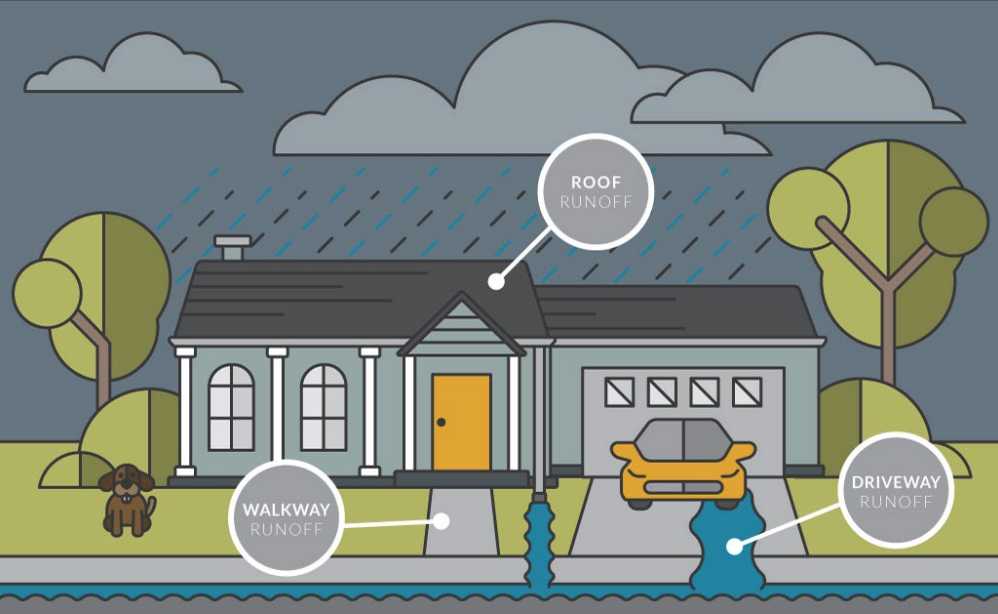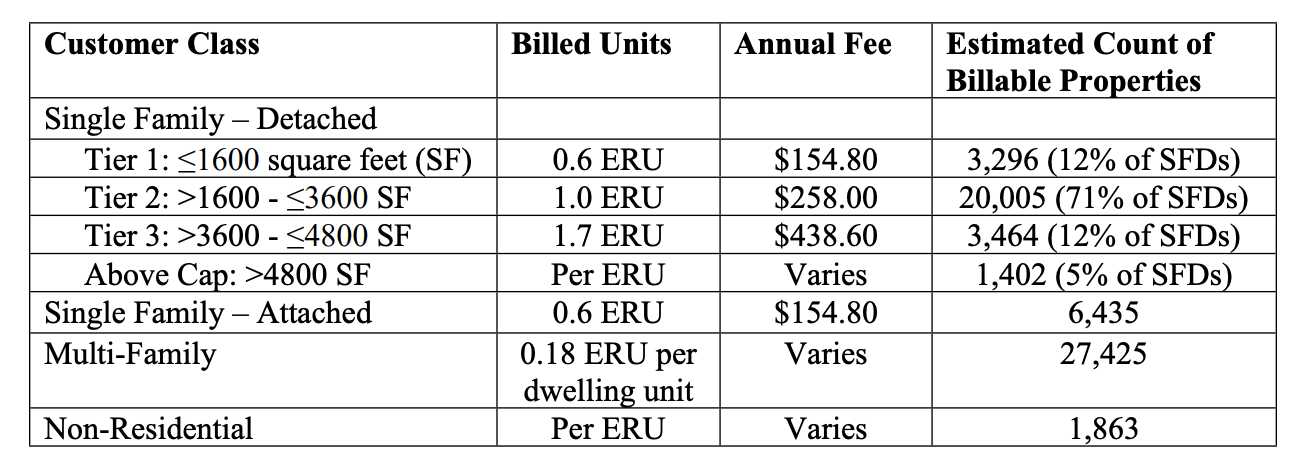
This weekend, the Arlington County Board is set to consider a new tax based on how much hard surface your property has.
Property owners with more hard surfaces that do not let rain soak into the ground — such as roofs and driveways — can expect to pay larger fees than those with fewer such surfaces. Revenue would support the county’s stormwater management fund, which pays for flooding mitigation projects.
The proposed rate would cost residents $258 per 2,400 square feet of impervious area, though this figure could change annually to support the budget, similar to how the county approves other fees and taxes. Property owners can receive credits for steps they take to reduce stormwater runoff.
Like the current sanitary district tax, the stormwater fee will be billed twice a year on the real estate bill, a county report says. The first bill will be sent to property owners in May, due June 15, 2024, and the second bill will come in September, due Oct. 5, 2024.
Homeowners can get a sense of their bill by plugging their address into an online map, which estimates impervious area using satellite imagery. This can range from $154 for a home under 1,600 square feet to some $19,000 for one local Catholic church.

If approved, the stormwater utility tax would replace the current sanitary district tax ($0.017 per $100 of assessed value on all taxable property) starting in the new year. The county says this is a fairer approach than using property assessments because there is not much of a correlation between property assessments and impervious areas.
“The rationale for using the amount of impervious area on each property, rather than all taxable real estate, is that it directly correlates with stormwater runoff that contributes to the County’s stormwater system,” a county report says. “Under the stormwater utility model, properties with more impervious area, which are therefore contributing more to the stormwater system, pay a higher fee.”
Following state requirements, Arlington will offer credits to customers who reduce the runoff their properties contribute to the stormwater system. In an informal Q&A last week, county staff said the number of credit applications coming in has kept them busy.
Arlington’s credit program rewards voluntary actions such as adding rain gardens. Now through Jan. 15, all property owners can apply for voluntary credits to offset up to 35% of their bill, or about $80 per 2,400 square feet. Details on credit options are spelled out in this county manual.
Properties where owners have added stormwater facilities mandated by statute, around 1,900, will automatically receive credits. These properties add up to about 1% of projected revenue and the county budgeted a total of 2% of revenue for credits.
Staff said the county will evaluate the amount of credits it dolls out each year, against the amount of revenue it needs to generate, to determine rates, and will study its rates every five years.
Senior and disabled residential property owners as well as disabled veterans and their surviving spouses are eligible for total fee relief, as they currently qualify for real estate tax exemptions and deferrals.
The idea of funding the county stormwater program with a tax on impervious surfaces has been in the works for three years. In May 2020, a consulting firm recommended Arlington transition to a utility funding model after researching how such a fee would affect different types of customers and examining different rate structures.
One year later, the Arlington County Board directed staff to do more analysis, engage the community and provide options for a utility fee by the 2024 proposed budget. In April, the Board adopted a resolution signaling its intent to adopt the stormwater utility ordinances.

